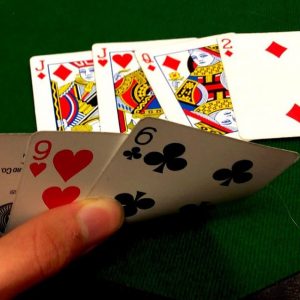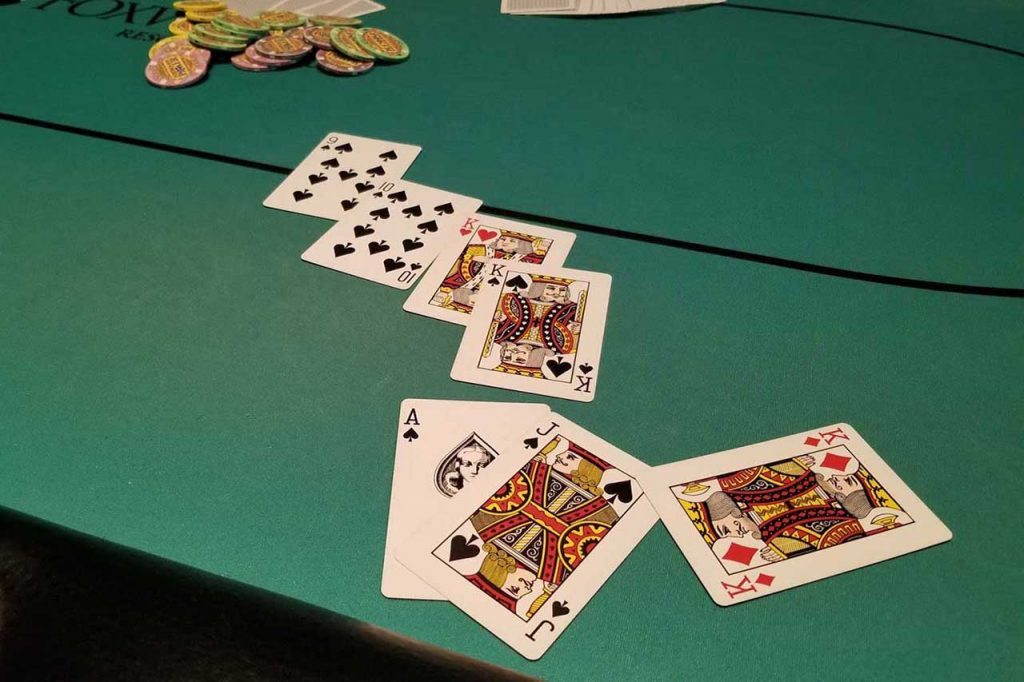Introduction to Bluffing in Seven Card Stud – Part II

Last week, we discussed bluffing in Seven Card Stud through fifth street. The more complex areas of bluffing occur on the later streets in Stud. You’ll see the best players able to pull off successful bluffs in key situations in the game, and you’ll see bad players fall for bluffs when they shouldn’t.
Let’s take a look at bluffing on the final two streets in 7 Card Stud and when you should ignore most bluff attempts.
Sixth Street Bluffing
By sixth street in Stud, both of your hands will be defined significantly. The most common bluff you will see on sixth street is when a person is showing three or preferably four cards to a straight or a flush. If the straight is open-ended, that will just give more reasons to bluff. Choosing to bluff, or semi-bluff if you have four cards to your draw, will depend greatly on how many of your outs have been shown. If you have an open-ended draw and only one or two of your outs have been out, then you have a great chance to bluff here.
The door card pairing bluff can be used on sixth street as well, but realize that if your opponent is drawing to a straight or flush, they will call the bet. In fact, you may still get called by two pair in this spot by players hoping to fill up on the river.
One thing to remember about sixth street bluffing is that if you bluff on sixth street, you must also commit to betting on the river. The reason is that if you bet out on sixth street representing a straight or flush and then check on the river, you just told your opponent you don’t have it.
River or Seventh Street Bluffing
As a general rule, you want to stay away from is choosing to wait until the river in Stud to run a bluff. Many stud players will call down one bet on the river with any type of reasonable hand. Only the tightest nit might fold on the river. Another exception to this rule is your “squeeze analyzers” as I like to call them. At the river, they squeeze their cards to see what they have and they take a while checking out what they have. If you can catch a player doing this, you might force them out with a bet. Otherwise, you want to play the river straight up.

Times to Sniff Out Potential Bluffs
Knowing when to sniff out a bluff is key to success in tougher Stud games. This starts with careful observation of hole cards. If you are able to commit upcards to memory consistently, this will help you narrow the potential hands your opponent is betting into you. For example, if they look to be drawing to a Broadway straight, yet you hold one jack and two others were folded earlier, the odds of them having a straight are long.
Also, you need to consider the pot odds in the hand you’re playing. In many cases, you will have the odds necessary to make the call against a potential bluffer. Generally, if the pot is going to return greater than 5 to 1 on your money, you pretty much have to call down one bet.
There are plenty of chances to bluff in a stud game. As with any other form of poker, you need to be mindful of whether your opponent is going to be sharp enough to fold, or if they are going to be a calling station. When you get a chance, incorporate some of the above tactics into your game, and you may be surprised to learn that you really can bluff in stud.
